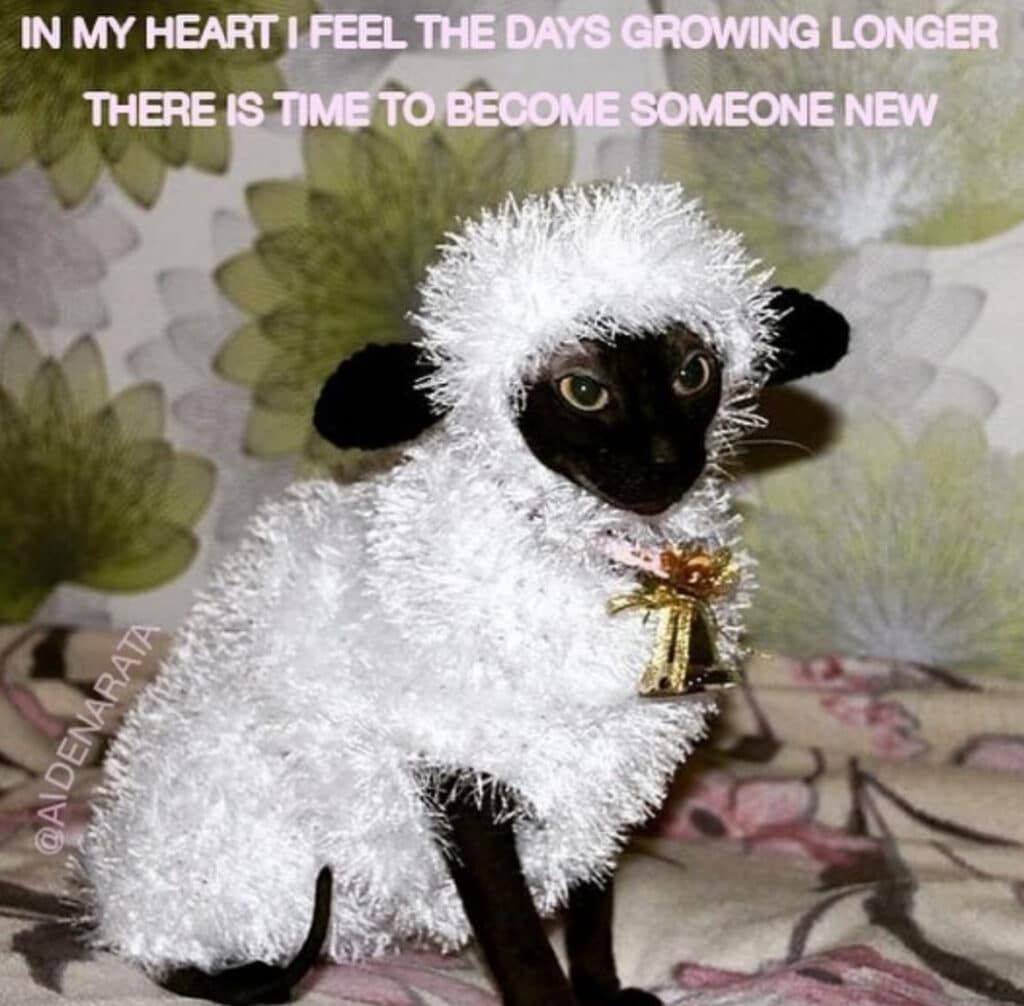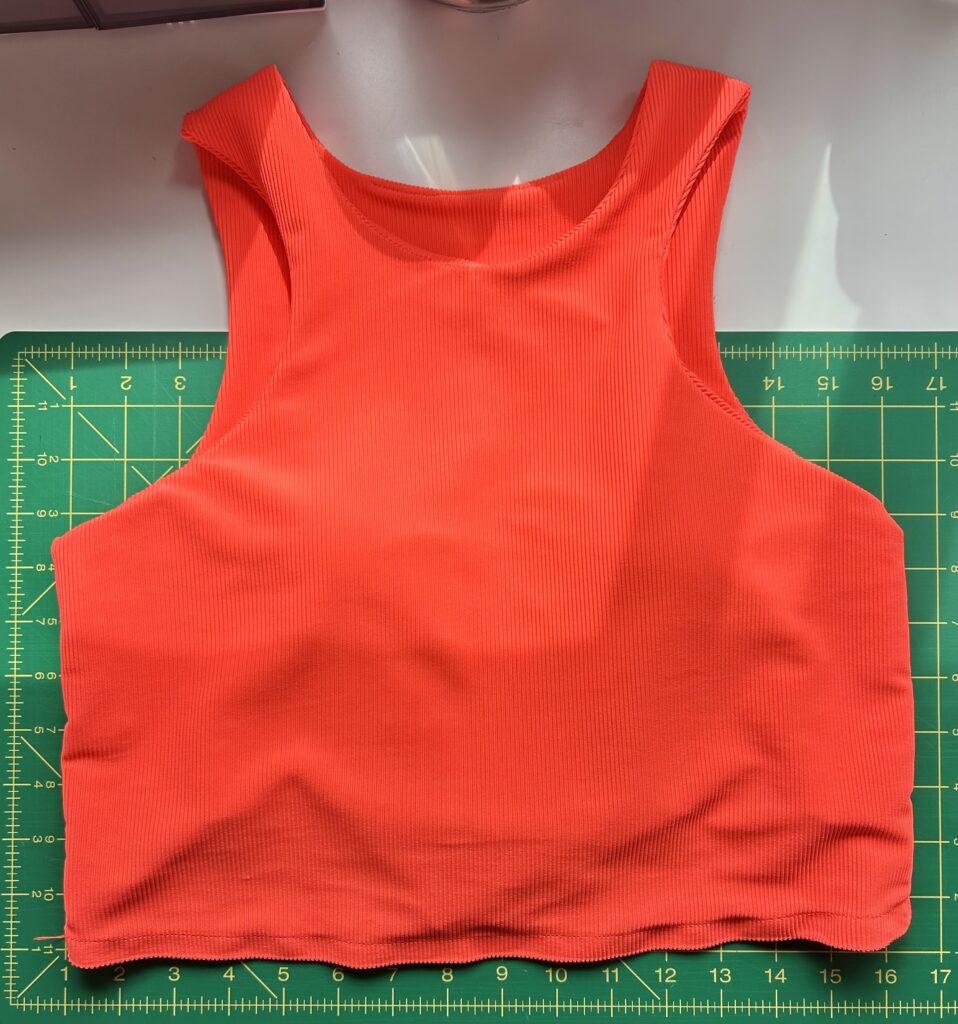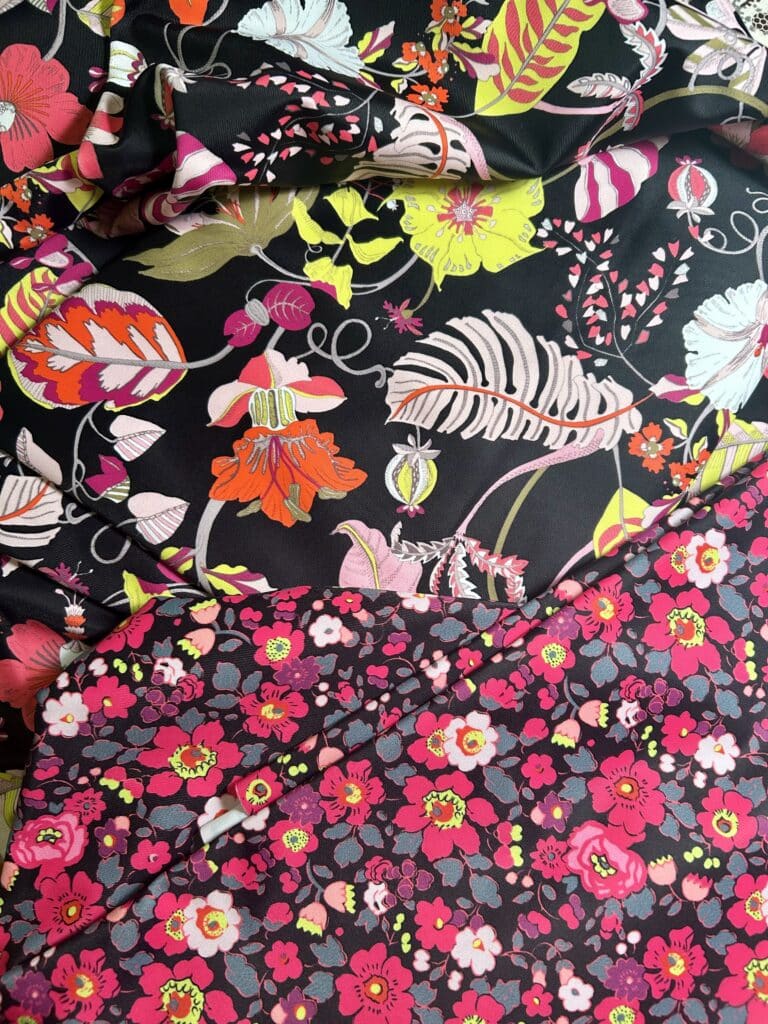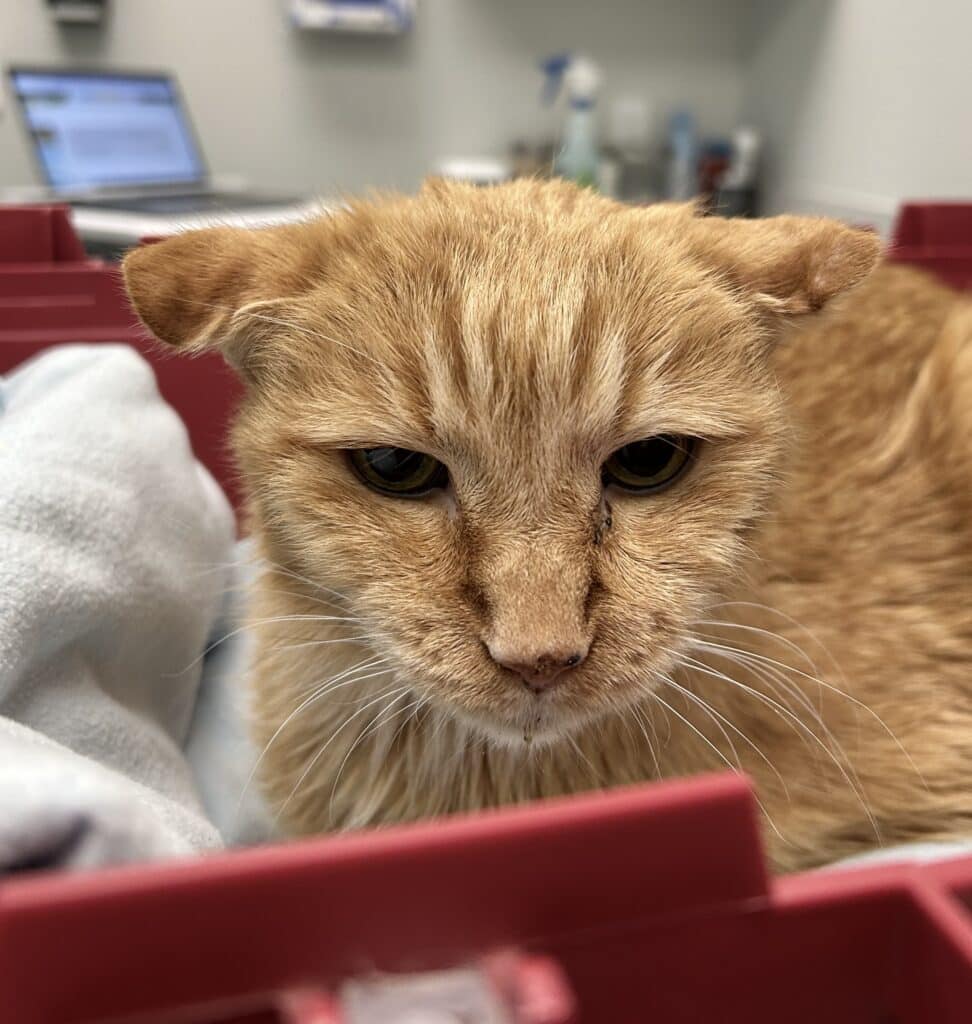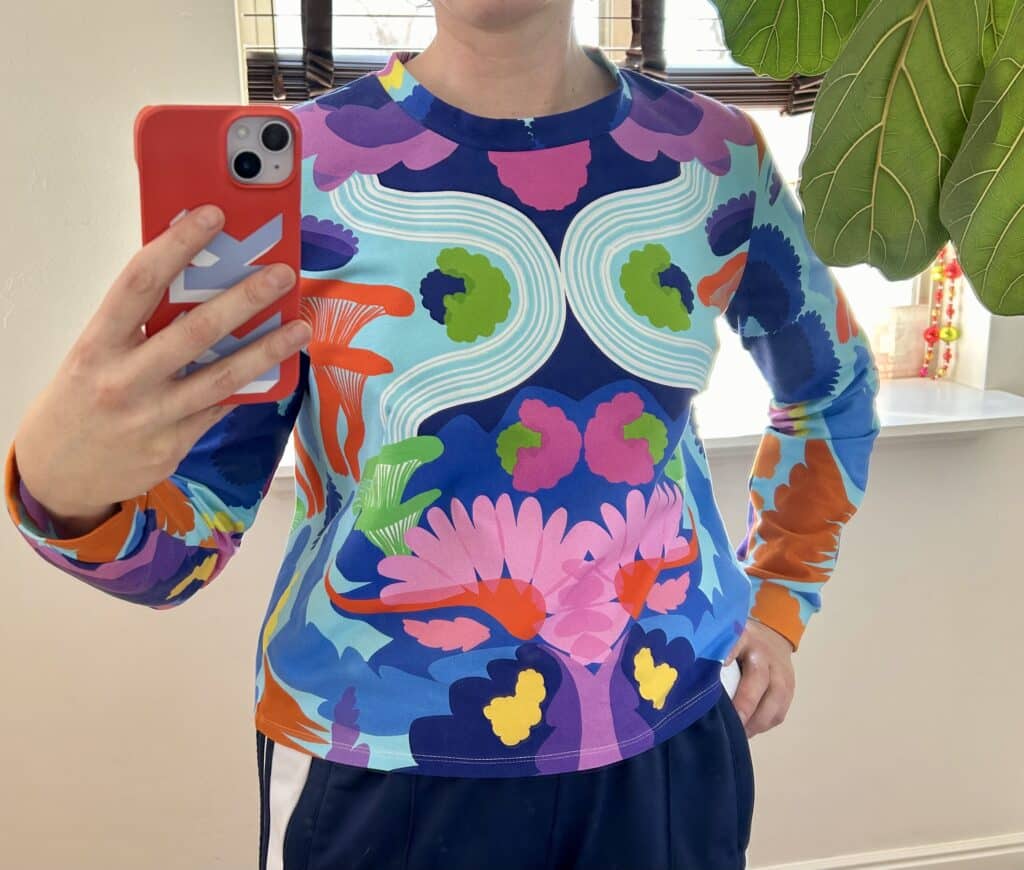2. For a distraction, why not look through an archive of illustrated sheet music covers from 1870-1940? I especially liked the theme of “animals as humans.”

Chicken-y Things
Last week it was frogs, this week it’s an accidental collection of chicken things. First up, via Kottke: Clickens.chickens.pics, a site where you “judge paintings of chickens based on characteristics like persistence, altruism, petulance, clairvoyance, and friendliness.” I don’t know why it’s so fun to click a chicken picture based on “Which is more hapless?” or “Which is more fashion?” but it is.
And I saved this Reel, because every time I watch it I have a new favorite. Currently it’s Yeti, who’s just happy to be here.
View this post on Instagram
Memes For The Spring Malaise
It’s the annual “I want it to be warm and I also want an entirely new wardrobe and maybe a new life” period of time. I think some of it is the stress hangover from a solid week of kitty worry, but some of it is also the desire to run away somewhere sunny and never answer another Slack message about client changes again.
I’m also feeble and round (artist):
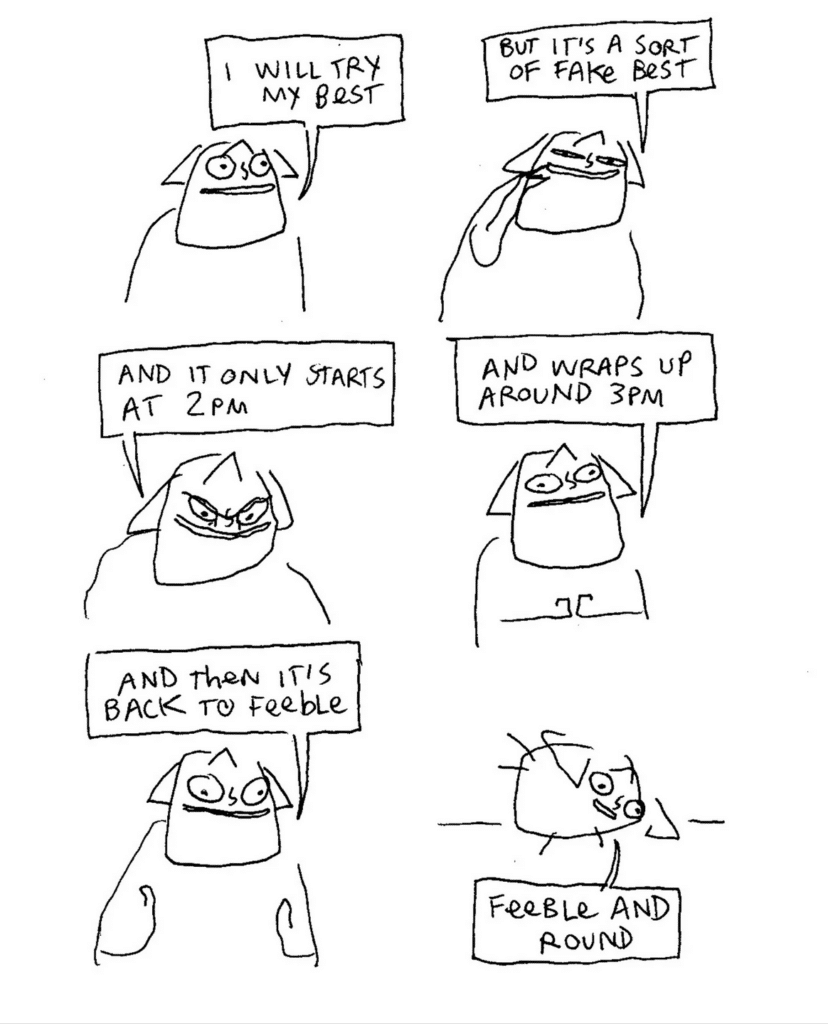
Maybe I just need another big project to get into…and some Easter candy?
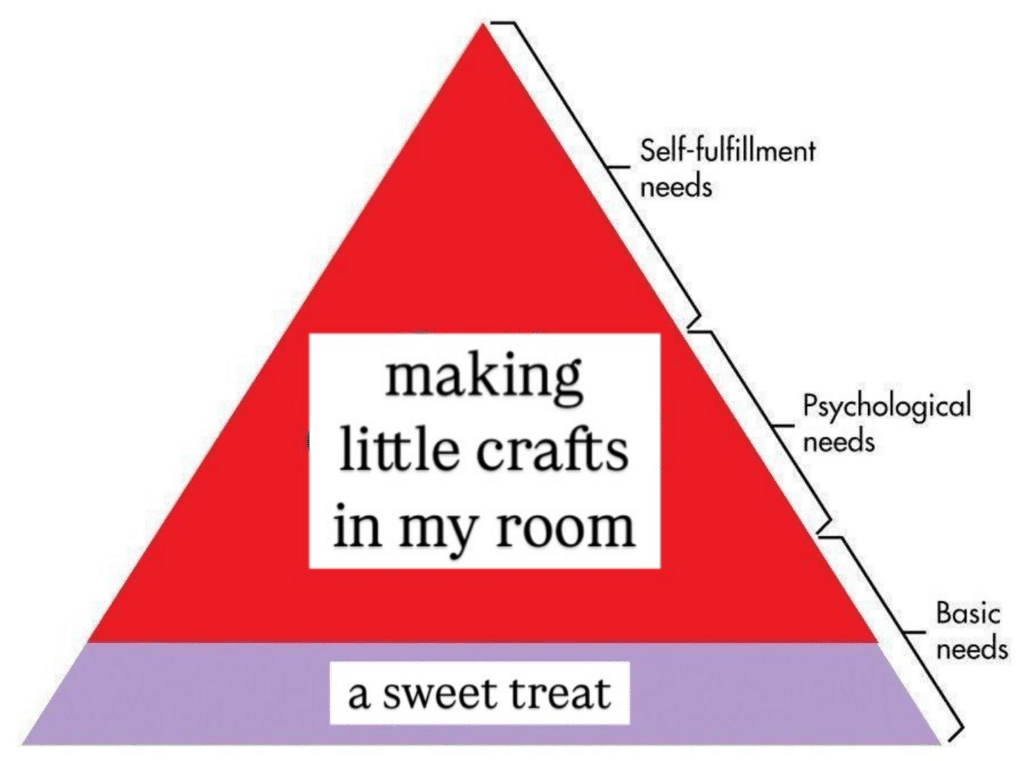
Tuesday Project Roundup: More Gym Stuff
I haven’t gotten into a big project since that travel backpack in January. It’s not that I don’t have sewjo, it’s more that I don’t have focus (due to work, the world at large, riding the Old Kitty Roller Coaster). But that’s OK, because there’s no shortage of smaller projects I can do, like gym stuff.
This is a Greentstyle Sky Tank in the shortest length with added powernet, auditioning to be a sports bra-top combo. This is fabric I bought vs. stash fabric but I only got a half yard (from Harmony, now sold out online).
Why is it auditioning? Because I wanted to try the clean finish construction method, even though I’ve made this before, and because I wanted to see if I liked the idea of a longline bra-top before I cut into … the Liberty activewear deadstock prints I just got from England (whoops).
Come Ride The Old Kitty Roller Coaster!
Toby’s recovery after his hypoglycemia scare kind of stalled out by mid week, and by Friday he was eating and drinking less and less. He had diarrhea and vomiting Saturday night and refused to eat anything at all Sunday morning … so back to the weekend vet we went.
His overnight stay for hypoglycemia was at the 24-hour MedVet hospital in Salt Lake City. We were about to take him back there and just deal with the 2- to 4-hour wait for the ER when Matt found the MedVet “urgent care” location in Sandy. It’s not 24 hours and it’s not critical care, but you can schedule an appointment and for things like dehydration and vomiting. Highly recommend for urgent weekend care. (Well, some of us do. Others don’t recommend it at all.)
They did bloodwork and his blood sugar was fine but his thyroid levels were off, which was probably causing the intestinal issues and loss of appetite–the poor little guy was queasy. He got fluids under the skin and an anti-nausea shot and then ate an entire can of tuna the staff gave him while we waited for his results.
He’s back to eating and drinking just fine now and he has a two follow up appointments over the next two weeks with his regular vet, so HOPEFULLY we’re not going to have another dip in the thrilling Old Kitty Roller Coaster after this.
 “Yeah Mom, I hope so too. You better not get that cat carrier out again.”
“Yeah Mom, I hope so too. You better not get that cat carrier out again.”
Friday Links
1. Exactly what it says on the tin: Owls In Towels.
2. Is it very helpful? No, it’s invaluable! Check out Lose The Very if you’re stuck for an adjective.
3. This makes an intriguing point: 
4. A noble use of time and technology:
Just Look At This Amaryllis
It’s not quite in bloom yet but look at this monster–my first successful amaryllis re-bloom!
This is the bulb that last bloomed in January 2024. Despite all the helpful literature included with it, I kind of made up what I did: Let the foliage grow for 6 months or so, then stopped watering until the foliage died, then put it in a cold garage for a month or two, then back to the basement and until I noticed the flower spikes, when it came upstairs.
I think the first spike is going to pop any day now–I’ve been watching that calyx open since Monday. 
Wednesday Poem
The Poets.org Instagram account shared this one four days ago and it was a good interruption to the doom scroll. We didn’t sign up for this but “you might as well/ get up and at it, pestilence be damned.”
Incantation of the First Order
by Rita Dove
Listen, no one signed up for this lullaby.
No bleeped sheep or rosebuds or twitching stars
will diminish the fear or save you from waking
into the same day you dreamed of leaving—
mockingbird on back order, morning bells
stuck on snooze—so you might as well
get up and at it, pestilence be damned.
Peril and risk having become relative,
I’ll try to couch this in positive terms:
Never! is the word of last resorts,
Always! the fanatic’s rallying cry.
To those inclined toward kindness, I say
Come out of your houses drumming. All others,
beware: I have discarded my smile but not my teeth.
Tuesday Project Roundup: Sewing While Waiting
Once we knew Toby was going to be ok on Saturday morning, there was a chunk of six or so hours when we could stop worrying but before we could bring him home. What do you do while you wait? Sew, of course.
This is another “in between top” (last seen in the fall), when you don’t need a full sweatshirt but could use long sleeves. Like before, I used the Named Patterns Sloane Sweatshirt, but I added about an inch total to the center front and back for a boxier shape. I also left off the bottom band–was it because I like the cropped look or because I forgot to add width to it to match what I did to the body? Who can say.
And that fabric! I just got rid of a lot of fabric I didn’t LOVE, so it was time to start using the good stuff. This is from a print run from Doops Designs, who usually does ready-made clothing but will offer some yardage periodically. Obviously I didn’t hesitate to get it shipped from Australia last year.
17 Years With Toby / A Toby Close Call
It’s Toby’s “gotcha day” anniversary today, 17 whole years ago … and I almost didn’t think we’d get any more days with him over the weekend.
He’d been getting slower and slower and using his box less and less over the last couple weeks, but in the middle of last week he got the “big sad eyes” that he had the summer he was diagnosed with diabetes. He was also not walking well, another thing that happened before we got his diabetes under control, so I thought, “Maybe he needs more insulin.” So I gave him a little higher dose than usual Thursday night and Friday morning but he still seemed so distressed and lethargic, we made a same-day vet appointment for Friday.
Reader, he was hypoglycemic. His blood sugar was at 30 (normal is 150-300). He wasn’t walking well because he HAD NO ENERGY. I feel absolutely terrible. That larger dose Thursday and Friday sent him over the edge but it’s likely he’d been getting too much long-term, which was causing the slowness and the big sad eyes. Did I mention I feel terrible?
He ended up having to be transferred from his regular vet to the 24-hour emergency vet to go on an IV drip of dextrose for a night and a day. We visited him twice in the ER and he was NOT HAPPY–this was his first night at a vet in almost 18 years, he didn’t want to eat food, he just wanted to go home. Needless to say, everybody was a wreck.
But we were able to get his blood sugar back to normal and take him home Saturday night, where he immediately had a wash and an entire can of wet food and a big nap. And now he’s like a new cat–getting on the bed with us at night, walking fast, being sassy. I am so relieved (and still feel so terrible–we’re not doing any insulin until we can consult with his regular vet and get a blood sugar monitor on him).
So Happy Adoption Day to Good Old Toby. I’m so glad we didn’t lose you.



